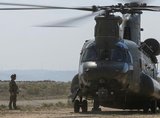Tactical advantage – is the best replacement for a C-130 another C-130?
A large number of operators of older-generation C-130s have opted to replace or augment their fleets with the J-model. (Photo: Lockheed Martin)
Embraer’s C-390 was recently declared fully operational by the Portuguese Air Force’s 506 Squadron. The Brazilian manufacturer had put significant effort into collaboration with local industry and the common language was of likely benefit.
This has provided Embraer with a bridgehead into what is likely to become a highly valuable market: the EU/NATO tactical transport segment. Hungary is due to receive the first C-390s in 2023-24 while the Netherlands appears strongly inclined to announce a purchase in 2025-26.
Saab, partnered with Embraer on the Gripen E/F fighter programme and which had long considered its own tactical transport design, is also
Already have an account? Log in
Want to keep reading this article?
More from DSEI 2023 | View all news
-
![The Joint Light Tactical Vehicle continues its success as the new variant rolls out]()
The Joint Light Tactical Vehicle continues its success as the new variant rolls out
The Joint Light Tactical Vehicle (JLTV) is becoming the dominant platform in its class as it replaces most of the massive US Army and US Marine Corps (USMC) fleets of HMMWV 4x4s, colloquially known as the Humvee. Shephard dives deep into the JLTV programme background and analyses the latest variants and contracts, including the controversial production switch to AM General and the continued contracts continuing to head Oshkosh's way.
-
![Dubai Airshow 2023: How the MQ-9 Reaper UAS came to rule the skies]()
Dubai Airshow 2023: How the MQ-9 Reaper UAS came to rule the skies
Ahead of the 2023 edition of the Dubai Airshow, Shephard looks at the GA-ASI MQ-9A Reaper UAS, its role in shaping modern conflict dynamics, and its deployment for surveillance and precision strike throughout the Middle East.
-
![Orbiting the Future: How New Satellite Technologies are Revolutionising Global Communications]()
Orbiting the Future: How New Satellite Technologies are Revolutionising Global Communications
With the satellite industry at a pivotal juncture, Intelsat is investing in advanced technologies like 5G and optical communications, striving to enhance worldwide connectivity and address emerging governmental needs.
-
![CH-47 Chinook: why the timeless helicopter design is still a heavy-lift contender on the modern battlefield]()
CH-47 Chinook: why the timeless helicopter design is still a heavy-lift contender on the modern battlefield
From its emergence as a ground-breaking design in the 1950s to its widespread deployment in diverse operations worldwide, the Chinook continues to leave an indelible mark on the aviation landscape. Shephard sums up the latest developments and tells you everything you need to know about the workhorse of many armies and air forces in the 2020s.
-
DSEI 2023: Controp unveils Smart Vision AI software for EO/IR payloads
Controp Precision Technologies unveiled its Smart Vision AI software for enhancing the level of autonomy and automation for a variety of surveillance and reconnaissance missions at DSEI 2023.
-
![Babcock and Cosworth to test hybrid propulsion in militarised Land Cruiser 70]()
Babcock and Cosworth to test hybrid propulsion in militarised Land Cruiser 70
Babcock has signed an MoU with propulsion experts Cosworth to investigate the use of hybrid power systems in military vehicles and will begin with integrating a Catalytic Generator (Cat Gen) into a 70 Series Toyota Land Cruiser.
























